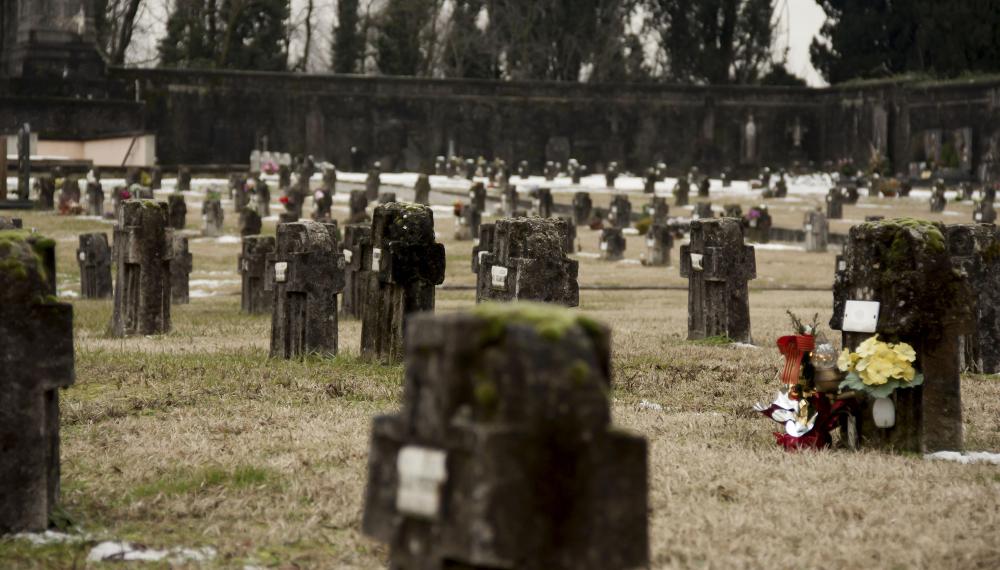At WiseGEEK, we're committed to delivering accurate, trustworthy information. Our expert-authored content is rigorously fact-checked and sourced from credible authorities. Discover how we uphold the highest standards in providing you with reliable knowledge.
What is Unique About the Cemeteries in New Orleans?
The cemeteries in New Orleans are perhaps the most famous in the United States. There are five major cemeteries within the city, all mainly Roman Catholic: Metairie, Greenwood Street, and three in the vicinity of the French Quarter collectively called Saint Louis. Because of the swampy ground in the area, settlers soon discovered that burying people underground was impractical, as the bodies would wash up whenever it flooded. Consequently, the cemeteries in New Orleans are characterized by above-ground tombs reminiscent of those in European cemeteries like Pere Lachaise in Paris.
The tombs in New Orleans cemeteries are often quite elaborate and accompanied by some of the country's best examples of funerary sculpture. Many of the tombs are family crypts that have been in use since the cemeteries opened in the 18th or 19th century. Also common in earlier days were tombs for the members of a certain company or organization. These are often the largest and most elaborate structures in the cemetery, as all of the people in the organization could chip in to buy a tomb a single family could never afford or fill up.

The oldest cemetery in New Orleans is Saint Louis #1, located on the northern border of the French Quarter. Saint Louis #1, opened in 1789 as part of a rebuilding of the city after a major fire, is the most famous of the city's cemeteries today and the most visited by tourists. This cemetery includes the tomb of Marie Laveau, the last voodoo queen of New Orleans. In the small Protestant section, there are large stone slabs covering the graves instead of above-ground tombs, as Protestants believed that their dead should only be buried underground. Saint Louis #1 is a great place to visit on a trip to the city, but it is important to go with a tour group because of the high rates of crime in the cemetery.

Saint Louis #2 and Saint Louis #3, opened in 1823 and 1854 respectively, both feature the grave sites of many famous blues and jazz musicians and other notable figures from New Orleans history. Saint Louis #3 is the furthest from the borders of the French Quarter, about two miles away, but has more elaborate tombs than either of the other two Saint Louis cemeteries, including many impressive marble monuments dating from the 19th century. Saint Louis #3 also has a Greek Orthodox portion.

Greenwood Cemetery, located in the Navarre neighborhood, was founded by the Firemen's Charitable and Benevolent Association in 1852. Although it is not as commonly visited as other cemeteries in the area, it features many interesting tombs and monuments, including a Civil War Veteran's memorial. Greenwood is the final resting place of a number of New Orleans mayors and Confederate generals.

Maiterie Cemetery is the most prestigious of the New Orleans cemeteries and features the city's most magnificent tombs and statuary and the largest collection of marble structures. It was built in 1872 on the site of a former racetrack. Band leader Louis Prima and poet Stan Rice are among the celebrities buried in Maiterie.
AS FEATURED ON:
AS FEATURED ON:














Discussion Comments
@dega2010: Stan Rice was the husband of author Anne Rice. They met while in a high school journalism class in Richardson, TX and married in Denton, TX on October 14, 1961. Stan and Anne moved to San Francisco in 1962 where they both earned a MA from San Francisco State University.
After the death of their first child, a daughter named Michele passed away from leukemia at the age six. Stan’s first book was a book of poem based on his daughter’s illness and death called “Some Lamb” in 1975.
Stan was also a painter, but the funny thing was his refusal to play the game as a painter and a poet. Rice succumbed to cancer at the age of 60 on December 9, 2002 in New Orleans. He is entombed in Metairie Cemetery in New Orleans.
Who is Stan Rice?
@christym: People visit Laveau’s tomb in hope’s that their wish will be answered. People often ask for favors with gifts of money, cigarettes, or rum as offerings. It is said that you must state your appeal three times, which is visible on the tomb by the triple X marks left by visitors.
There is also a tomb in the St. Louis Cemetery #2 bearing the name of Marie Laveau. This tomb is known as the “wishing vault”, because many young women often visit when they are seeking a husband.
Why is the tomb of Marie Laveau the most visited in New Orleans?
Post your comments